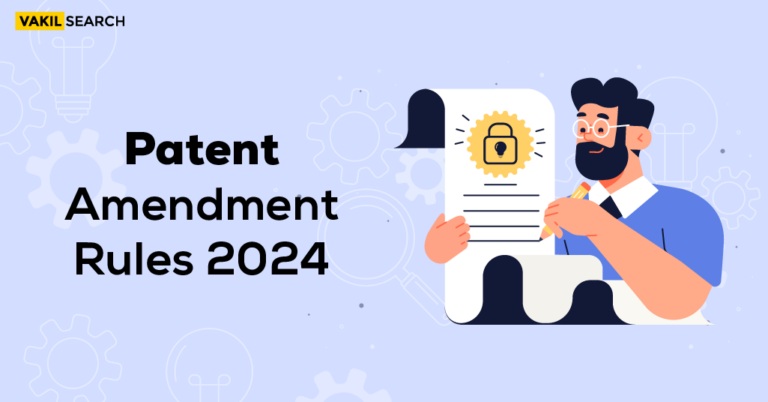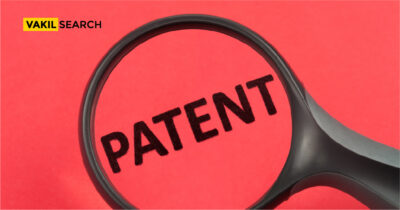Indian Patent Act specifies the products that can be patented and the possible threats that continue to linger even when the patent has been granted. Read this article to know everything about Indian patent laws to date.
A patent is defined as an exclusive right provided to the inventor by the law enforcing agency to restrict anyone from using, creating, and earning revenue with the help of his creation for a specific duration. Not all inventions are patentable.
The primary motive of the Indian Patent Act is to encourage great inventors to contribute more efficiently in their sector. This is done by protecting their marketing and ownership rights. India Patent Act allows patenting processes or products that go through the inventive phase. Patent Applications are filed as an organization or even individually. An assignee can also be appointed to apply on behalf of the inventor.
Patent – History
Patent Registration in India – The preliminary stage of the Indian Patent Act was Act VI which was proposed in 1856. The idea of the legislative council was to convince inventors to disclose their inventions for public benefit. Amendments followed in 1859 when approvals were granted to limited innovations only; the previous priority period was also extended to 12 months instead of 6. Subsequent amendments followed in 1872 and 1883 before the final refining took place in 1888.
The Indian Patent Act of 1911 overcame the loopholes of previous similar laws. Upgraded legislation came into force on 20th April 1972. The Indian Patent Act depends a lot on the suggestions published in the report of Justice Ann. One such recommendation was approval process patents for drug inventions that drew inspiration for a similar legal stance involving food commodities that included medicine, microorganisms and chemicals. New provisions regarding pre-grant have also been launched after the amendment of 2005. You can make a Patent Search Process with help of our Experts.
What Can You Patent?
The Indian Patent Act vividly clarifies what cannot be patented in Sections 3 & 4. Few benchmarks have to be met if you look to obtain a patent in this country.
The first thing that must be evaluated is whether the creation points to a patentable subject matter or not. Section 4 and 3 of the Act enlist every possible non-patentable object. Make sure your creation does not belong to any one of them.
Novelty is the next consideration. Section 2(1) states that the process defined in the patent application should not resemble any technology revealed before the patent filing date. Your invention needs to be the newest of its kind in the public domain.
Section 2 enforces the provision that the patentee must apply for patenting a product that offers commercial application. It must not be an abstract entity. Statutory criteria are set to measure its practical utility. An ideal patent disclosure should enable skilled personnel to implement the product’s features with undue efforts.
Lastly, the invention needs to be non-obvious. It must be a completely new idea never discussed before by anyone from a similar profession.
Patentee’s Rights and Obligations
A patentee owns the exclusive authority to modify, sell or allocate the patented product in India. The Indian Patent Act grants this permission to the patentee and his licensees or agent. The author also gets the discretion to hand over rights, approve licenses, or commit to a separate arrangement for a decision.
The national controller of patents must register this consideration in writing before the ownership gets transferred to the new party.
Any patentee can also surrender their patent, and after their application gets accepted, the news is published in the formal Gazette so that interested parties can oppose it. Lastly, any patentee’s fundamental right to sue an offender in the respective District Court is a measure against patent infringement. You Can also Know more about the Patent Utility in India with experts advice.
There are a few associated obligations as well. The national government has full right to utilise a product that has been previously patented for its personal use. For acquiring this authority, consent of the patentee is not required. Provisions of our Indian Patent Act provide authority to the Central Government to allow a generic drug manufacturer to produce cheap medicine in common interest even when that specific composition’s patent status remains active.
Patentees who come up with defense ammunition are restricted from publishing their creation in public portals. The Government usually pays Royalty fees to the inventor for buying the ownership rights permanently. Patents can be withdrawn if no satisfactory result has been achieved in public interest compared to what was promised initially during patent drafting.
What is Patent Infringement?
When patent laws are violated to access someone’s patented process or product by unfair means, we refer to patent infringement. Many patents coexist. Some are utility patents, plant patents, and design patents. If unauthorized parties gain profit or garner personal interest from these patents, they are subject to legal proceedings.
Inducement is a type of patent infringement where a third party may sell portions of a patented product. Contributory infringement involves fund transfer involving patent materials with no practical commercial application. Violators have intentional infringement intent.
The doctrine of Equivalents
Patent infringement can be literal infringement or infringement involving its doctrines of equivalents. A claim is infringed within the so-called doctrine of equivalents when the accused party or similar other entity of the procedure does the same action as literal violators.
The equivalence principle is a legal policy in most the patent system. The prior art’s principle limits the patentee’s coverage scope. The doctrine of equivalents appears as the equitable doctrine that enhances the horizon of the author’s claims beyond the literal terms.
Patent Infringement – Remedies
Measures available in infringement litigation comprise monetary relief and equitable relief.
Monetary relief is achieved by indemnity compensation where the patentee has lost revenue for infringement while establishing the patented product’s value. A severe will violation mandates the criminal to pay almost three times the usual compensation amount. Equitable relief is provided upon court orders to prevent the patentee from doing anything unlawful. Preliminary injunction defines orders declared in the early stage of lawsuits to restrict parties from taking adverse actions. A permanent injunction is the ultimate court verdict that permanently closes definite case-related activities or executes other necessary measures.
Case Laws
Hoffman vs Cipla: The jurisdiction proved in this case that big brands could not patent protecting life-saving drugs. The Controller denied patenting to Hoffman Roche on 27th November 2015 to protect the interests of the public. Thus Indian Patent Act encourages innovations; it does not allow complete ownership authorities to companies without judging public goods.
The High Court of Himachal Pradesh handled the case between Dhanpat Seth and the Union of India. It denied the patenting of a device meant for storing agricultural produce made by Nilkamal Plastic Ltd. It was a mere modification of ‘Kilta’, a similar storage solution previously patented by the indigenous plaintiff. The product was not patented as it did not offer any enhancement in productivity.
Conclusion:-
e-Patent are worth an investment as they protect a firm’s exclusive ownership rights related to their inventions. Companies can freely disclose their processes. This is important considering the international industrial stance.
Read more,










